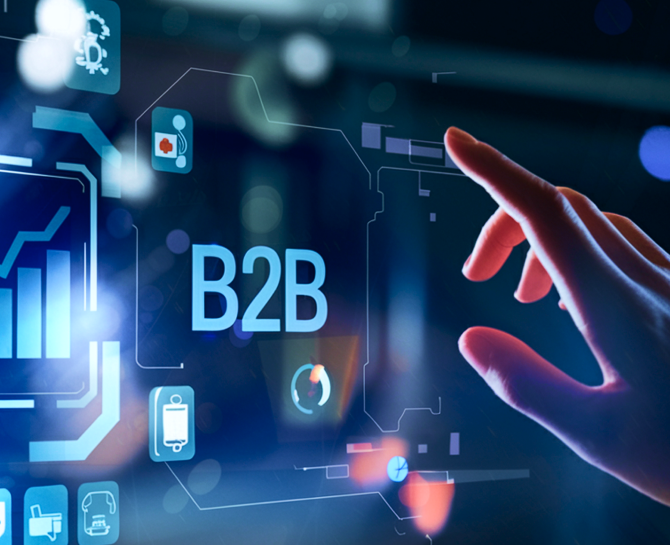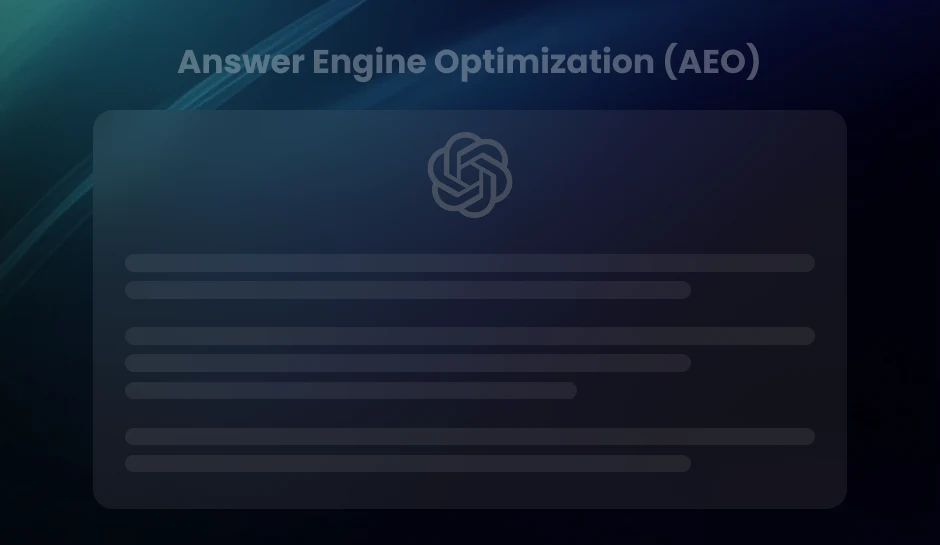
Enhance Revenue Potential with B2B Data Enrichment Software
B2B data enrichment software turns incomplete records into high-value insights. By adding firmographic, technographic, and intent data, businesses can improve lead quality, personalize outreach, and align sales and marketing for faster revenue growth
Raw data won’t close deals, refined data will. B2B data enrichment transforms incomplete, outdated, or inaccurate records into actionable insights. It supplements existing business profiles with up-to-date firmographics, technographics, revenue figures, and contact-level details, filling the critical gaps that hinder conversion strategies.
For B2B companies, enriched data shortens sales cycles, sharpens targeting, and enables hyper-personalized outreach. Instead of chasing dead-end leads or generic personas, teams gain direct access to decision-makers, budget authorities, and real-time company changes.
As buying journeys grow more complex, the demand for clean, consistent, and comprehensive data becomes non-negotiable. Marketing and sales operations increasingly depend on enriched data to fuel automation, segment audiences effectively, and prioritize high-value accounts. In high-stakes B2B environments, precision drives performance, and enrichment software delivers exactly that.
What Is B2B Data Enrichment Software?
Definition and Key Purpose
B2B data enrichment software enhances and expands the information associated with business contacts, leads, and accounts. At its core, it supplements raw or incomplete data with additional, context-rich fields-firmographics, technographics, and behavioral signals-creating a more complete and actionable profile. The goal isn’t simply to collect more data, but to transform limited records into high-value assets that support targeting, qualification, and personalization at scale.
How It Works: Augmenting CRM and List Data
This software operates by linking existing records-often sourced from CRMs, marketing automation platforms, or email lists-to external data sources. These sources may include proprietary databases, public web data, third-party aggregators, or intent signal providers. Once connected, it fills in missing fields such as:
- Firmographics: Company size, revenue, industry, location, organizational hierarchy.
- Technographics: Technologies used by the company-CRM software, marketing tools, infrastructure platforms.
- Intent data: Behavioral indicators that reflect the buying stage, such as search behaviors or content engagement patterns.
For example, a record that only contains a lead’s name and email can be automatically enriched to include their job title, company revenue bracket, recent technology purchases, and the frequency with which they browse competitor pricing pages. This transformation directly supports segmentation, routing, scoring, and personalized outreach.
Real-Time vs. Batch Enrichment
Deployment of enrichment can follow two primary modes-real-time or batch. Real-time enrichment adds data dynamically, often at the point of lead capture or when a contact enters a workflow. This mode is used for speed-sensitive applications such as chatbots, lead forms, and automated routing.
Batch enrichment, in contrast, processes large volumes of records in scheduled runs. Some systems can enrich an entire CRM database overnight, applying updates to stagnant or outdated profiles. Businesses often combine both modes, real-time for frontline efficiency, and batch for periodic database health improvements.
Pro Tip-To maximize ROI, combine real-time enrichment for inbound leads with scheduled batch enrichment for existing records. This hybrid approach ensures your CRM stays fresh and accurate while allowing marketing and sales teams to act on the most up-to-date insights exactly when they need them.
Why B2B Teams Gain a Competitive Edge with Data Enrichment Software
Improves Lead Quality for Sales Teams
Relying on raw or incomplete lead data forces sales teams to waste hours chasing unqualified prospects. Data enrichment software eliminates that inefficiency by adding firmographic, technographic, and behavioral insights to each lead profile. This process filters out low-fit contacts and automatically flags high-conversion targets.
In one example, companies using enrichment software saw a 33% increase in SQLs (Sales Qualified Leads), according to Clearbit’s internal benchmarks. Sales reps no longer need to spend time researching company size, revenue, or decision-makers; enriched records provide those fields upfront.
Enables Better Customer Segmentation for Personalized Marketing
Not all prospects behave the same, and enriched data exposes the differences. With more fields populated, such as job title, industry, number of employees, or tech stack, marketers can slice audiences into microsegments based on precise attributes.
- Target fintech companies using AWS with a CRM integration campaign.
- Send IT leaders in SaaS firms a webinar invite on cloud migration strategies.
- Exclude early-stage startups from advertisements for enterprise solutions.
This level of targeting drives relevance. Campaign Monitor found that personalized email campaigns based on enriched data increase click-through rates by up to 14% and improve conversion rates by as much as 10%.
Enhances CRM Records with Actionable Information
CRMs are only as useful as the data inside them. B2B data enrichment software integrates with popular CRMs, such as Salesforce, HubSpot, and Microsoft Dynamics, automatically populating records with verified data sourced from LinkedIn, company websites, and financial databases.
This automated enrichment reduces manual data entry while maintaining consistency. For example, company size becomes a sortable field, enabling better forecasting. Revenue brackets can be tied to deal scoring models. With updated decision-maker titles, sales teams route leads to the right reps without delay.
Streamlines Marketing Automation Workflows
Workflows built on enriched data run smoother. Automation platforms like Marketo, Pardot, and HubSpot rely on field values to trigger actions, and incomplete fields lead to broken sequences. Enrichment fills the gaps in real time, so automations function predictably.
For instance, a campaign can pause leads from companies with fewer than 10 employees while fast-tracking enterprise leads for account-based engagement. Demographic enrichments, such as seniority or location, can influence email cadence, content variants, and routing logic.
Once data enrichment is in place, marketing teams report saving up to 6 hours per week per representative on lead qualification and campaign setup, based on a 2023 report by Demandbase.
Pro Tip- Use enrichment-triggered segmentation to power dynamic content in email and ad campaigns. By mapping enriched fields like industry, seniority, or tech stack to specific messaging variants, you ensure every prospect sees contextually relevant content, boosting engagement without increasing manual workload.
Seamless Integration with CRM and Marketing Tools
Direct Connections to Leading CRMs
B2B data enrichment software integrates directly with major CRM platforms, including Salesforce, HubSpot, and Zoho. This connection injects enriched data into contact, company, and deal records in real time or on a scheduled basis. Salesforce users, for instance, can automatically enrich leads and accounts with over 50 data points, including firmographics, tech stack, and buying signals.
HubSpot offers a native enrichment workflow integration through its App Marketplace, providing users with immediate access to enriched contact profiles directly within the dashboard. In Zoho, enrichment plugins update lead records and append missing fields without manual imports or CSV juggling. The result? Sales and marketing data stays accurate, complete, and ready for use the moment it’s needed.
Streamlining Marketing Automation
When enriched data flows effortlessly into marketing automation tools, targeting becomes laser precise. The Campaigns segment allows you to segment audiences by revenue range, employee count, or recent funding without lifting a finger. Automatically appended job titles and seniority levels enable dynamic workflows that directly address decision-makers.
A Unified, Cross-Platform Data Foundation
Data enrichment platforms create a single source of truth across sales and marketing systems. Whether data originates from a CRM, an email campaign, or a live chat tool, enriched platforms harmonize disparate formats into a standardized, normalized structure.
This unification enables B2B teams to sync customer profiles across tools without inconsistencies. Marketers build audiences based on accurate segments populated directly from enriched fields in the CRM. Sales representatives conduct outreach, knowing that the contact data aligns with the most recent updates, regardless of the source.
Flexible API Integrations for Growing Ecosystems
Modern B2B enterprises rarely rely on a single-stack setup. APIs power custom integrations between enrichment software and any tool in the martech or sales tech ecosystem. Through RESTful endpoints, platforms push and pull data into proprietary systems, business intelligence tools like Tableau, or vertical-specific CRMs used in industries like manufacturing or SaaS.
- Scalability: APIs support growing lists, enabling data enrichment at scale, tens of thousands of records per day, without performance degradation.
- Customization: Developers define trigger conditions, field mapping, and retry logic with precision.
- Automation: Once integrated, enrichment occurs in the background without human intervention.
The API-first architecture of top data enrichment platforms creates an extensible infrastructure that evolves in tandem with your sales and marketing operations.
Pro Tip-Before integrating your enrichment tool, audit your CRM field mappings and automation logic. Ensure standardized naming conventions across systems to enable enriched data to flow cleanly into segmentation, routing, and scoring models, minimizing sync errors and maximizing automation efficiency.
Supercharge Account-Based Marketing with B2B Data Enrichment Software
Identify the Right Accounts with Precision
B2B data enrichment software transforms vague prospect lists into focused, account-level intelligence. By appending firmographic, technographic, and intent signals to basic lead data, marketing and sales teams can identify high-fit accounts across various verticals, company sizes, tech stacks, buying intent, and geographic concentrations.
For example, enrichment uncovers insights such as:
- Annual revenue and employee count tiers
- Installed technologies across the tech stack
- Recent funding rounds, mergers, and acquisitions
- Job openings that signal a product need
- On-site behavior indicating active research
With this level of depth, teams move beyond “spray and pray” tactics. Instead, they concentrate resources on accounts that match their ideal customer profile and show real buying intent. As a result, pipeline efficiency increases, and average deal size tends to grow.
Map Stakeholders Across the Buying Committee
B2B purchases rarely get approved by a single decision-maker. Enrichment tools surface contact-level data across departments and seniority levels, enabling full visibility into multi-threaded buying groups.
Using enriched data, organizations can:
- Identify titles and roles often involved in purchase decisions
- Access up-to-date emails, phone numbers, and LinkedIn URLs
- Discover reporting relationships and organizational hierarchies
A typical B2B buying committee includes 6 to 10 stakeholders, often spanning marketing, IT, finance, procurement, and executive leadership. Enrichment ensures your outreach strategy hits each layer strategically. No more guessing who’s involved, your SDRs know exactly who to engage and when.
Deliver Messaging that Cuts Through the Noise
Generic content is sent directly to the archive bin. Personalized campaigns that address a specific company’s pain points, technology ecosystem, and business objectives are more effective. Enrichment opens the door to personalization at scale.
Here’s how enriched data enables hyper-targeted ABM experiences:
- Tailored messaging based on industry-specific challenges
- Customized email copy triggered by recent company news
- Landing pages populated with firmographic-relevant case studies
- Ad targeting based on firm-level job roles and intent data
Marketers use this data to orchestrate multi-channel campaigns that align creative and timing with the customer’s buying journey. From initial cold outreach to nurture sequences and sales follow-up, every touchpoint feels intentional and relevant, because it is
Pro Tip- Before launching your next ABM campaign, use enriched data to pre-build micro-segments by industry, tech stack, and intent signals. This not only ensures laser-focused targeting but also enables dynamic content personalization, drastically increasing engagement across email, ads, and outbound efforts.
| Data Type | Description | Key Data Points | Use Cases |
|---|---|---|---|
| Firmographic Data | Structural and financial details that define a company’s profile. |
– Company size (employee range) – Annual revenue – Industry classification (NAICS/SIC) – Headquarters location |
Segmentation, territory planning, account prioritization, ABM targeting |
| Technographic Data | Insight into a company’s current tech stack and digital maturity. |
– CRM platforms (e.g., Salesforce, HubSpot) – Marketing automation tools (e.g., Marketo, Pardot) – CMS/Web hosting platforms |
Compatibility checks, integration messaging, displacement of competitor solutions |
| Intent Data | Behavioral signals that indicate buying interest or solution research. |
– Surge in topic activity – Keyword-level intent signals – Engagement frequency/recency |
Lead scoring, sales prioritization, timing outreach, buyer journey mapping |
| Third-Party Data | External, verified data that enhances, updates, or validates internal records. |
– Verified contact info (email, phone, social) – Corporate hierarchies – Business events (funding, acquisitions, product launches) |
Record completeness, trigger-based outreach, contact accuracy improvement |
How B2B Data Enrichment Drives Sales Intelligence
Using Enriched Data to Forecast Behavior and Prioritize Leads
Raw data offers little insight without synthesis. Once enriched, it transforms from fragmented signals into layered behavioral profiles. With comprehensive firmographic, technographic, and intent data at hand, predictive modeling moves beyond guesswork. Sales teams can rank leads based on likelihood to convert, forecast buying windows, and model lifetime value with greater precision.
For example, when a decision-maker’s recent hiring trends are combined with industry-specific budget indicators and web activity, algorithms can predict purchase intent weeks before outreach. According to Forrester, companies that use AI-driven predictive analytics experience a 15% improvement in lead conversion rates and a 20% increase in pipeline velocity.
Real-Time Analytics Tools for Efficiency and Speed
Modern sales cycles reward timing. Tools that fuse enriched data with real-time activity tracking cut through the lag. Platforms like 6sense and ZoomInfo RevOS continuously refresh lead scores as new signals arrive, website visits, job changes, product searches, and more, so sales reps don’t chase dormant accounts.
This dynamic feedback loop reduces manual qualification and accelerates sales velocity. When a prospect attends a webinar, downloads a whitepaper, and posts a new ops headcount on LinkedIn, these signals flow directly into predictive engines. Relevance isn’t static, and the software adapts accordingly.
Contextual Intelligence for Smarter Engagement
Timing means little without context. Predictive analytics embedded in B2B data enrichment platforms doesn’t just say who to contact; it defines how and why. Sales reps armed with enriched profiles gain conversation-ready insights: a CTO’s recent tech stack transformation, a VP’s past buying patterns, a company’s sudden M&A activity.
- Persona-level signals help tailor messaging to job function and pain points.
- Engagement analytics identify which content triggered interest and for how long.
- Intent scoring models ensure that reps focus on prospects who are ready to move.
The outcome? Fewer generic pitches, more strategic conversations. Sellers operate less on persuasion and more on relevance, with responses guided by data rather than hunches.
What sales team wouldn’t benefit from knowing which accounts are on the verge of churn, which verticals are opening new locations, or when key decision-makers are in buying cycles? Predictive intelligence turns patterns into priority. And with the right data enrichment software, those patterns become visible before competitors even see them.
Pro Tip- To maximize sales intelligence, sync enriched data with your predictive lead scoring model on a weekly basis. This ensures that real-time behavioral signals, such as job changes or funding events, automatically influence lead prioritization, helping reps focus on prospects who are showing intent at this moment.
How to Evaluate and Choose a B2B Data Enrichment Provider
Accuracy and Recency of Data
Accurate and recent data drives better targeting and higher conversion rates. Assessing a provider starts with understanding how they collect, validate, and maintain their data. Ask for sample datasets. Compare fields like job titles, firmographic attributes, industry classifications, and URLs against verified sources.
Benchmark their dataset against public company records and platforms, such as LinkedIn. Data that’s more than 90 days old? That’s a red flag; buyer personas shift fast, and outdated records drag down campaign performance.
Depth of Firmographic and Technographic Coverage
Strong firmographic data includes company size, revenue, location, and industry segmentation. Technographic data adds insight into a company’s tech stack, CRM systems, marketing automation tools, cloud infrastructure, and more.
Look for providers that can provide more than just surface-level information. Can they identify whether a company uses Salesforce, Marketo, or Microsoft Azure? Can they pinpoint department size or software spend? These data points fuel segmentation, personalization, and ultimately, higher ROI.
Integration Capabilities
The speed of implementation depends heavily on the flexibility of integration. Verify whether the enrichment solution integrates natively with your existing stack, including Salesforce, HubSpot, Marketo, Outreach, and Snowflake. RESTful APIs and prebuilt connectors accelerate deployment and reduce IT costs.
Some providers offer plug-and-play apps directly from Salesforce AppExchange or HubSpot’s marketplace. Others require custom development. The fewer hoops to jump through, the faster your team starts seeing results.
Customer Support and Data Update Frequency
Customer support creates a direct line between your sales and analytics teams and the enrichment vendor. Live chat support, customer success managers, and robust onboarding programs signal high vendor maturity.
Just as critical is the provider’s data update cadence. Daily refreshes lead to maximum precision. Weekly or monthly updates are common, but they won’t cut it if you rely on real-time signals to engage in-market buyers.
Pricing and Scalability for Growing Companies
Pricing models vary; some providers charge by the number of records enriched per month, others by seat or API call volume. Scrutinize hidden costs and evaluate overage fees. Flat-fee models offer predictability but may lack flexibility.
- Can the platform scale as your company enters new verticals?
- Does the provider support multi-region compliance as your team expands?
- Are custom fields and segmentation rules easily adjustable as your ICP evolves?
A scalable B2B data enrichment provider doesn’t just support your business today; it powers your go-to-market motion for the next stage of growth.
Pro Tip-When evaluating a B2B data enrichment provider, run a pilot on a small segment of stale CRM records. Measure uplift in lead qualification, campaign performance, and data accuracy post-enrichment. This real-world trial will expose gaps in data freshness, integration ease, and field coverage, far more effectively than a generic sales demo.
The Future of Data Enrichment in B2B
AI and Machine Learning: From Reactive to Predictive
AI is not just scanning data anymore; it’s building context. Algorithms now detect buyer intent signals, automate segmentation, and anticipate ideal customer profiles based on micro-patterns often invisible to human analysts. According to a 2023 McKinsey report, B2B organizations that implemented AI-driven enrichment tools outperformed peers by 15% in lead conversion efficiency.
Machine learning models in enrichment platforms constantly refine themselves. As new data flows in-ranging from firmographics to technographics, they reassign scoring, segment leads more granularly and personalize messaging automatically. The result? Campaigns that align more tightly with true buyer readiness.
Real-Time Enrichment Becomes the New Standard
Static data ages fast. In high-velocity markets, visibility into a prospect’s status from days or even hours ago can lead to incorrect targeting. With real-time API boosts and webhooks, enrichment platforms now update records the moment a trigger event occurs, such as a leadership change, product launch, funding round, or hiring surge.
This shift means marketing and sales teams don’t just operate with updated data; they act on it instantly. SDRs can prioritize calls based on live engagement, while marketers can launch campaigns based on newly surfaced buying signals, all within minutes.
Full Ecosystem Integration: CDPs and RevOps Stacks
Customer Data Platforms (CDPs), revenue intelligence platforms, and RevOps infrastructure are converging. Enrichment tools must now plug directly into this ecosystem. No more siloed enrichment pipelines-data must flow into Salesforce, HubSpot, Segment, 6sense, and Clari simultaneously, augmented and actionable in every touchpoint.
Vendors are responding with native integrations and event-driven architecture. Unified customer records are being automatically populated, scored, and routed across systems without manual intervention. This coordination elevates not only targeting but also forecasting, pipeline health monitoring, and even CX strategy.
Ethical Data Usage and Rising Compliance Pressure
GDPR, CCPA, and a wave of emerging data privacy laws-from Brazil’s LGPD to India’s DPDP-are redrawing the boundaries of what enrichment platforms can do. Compliance will no longer be a checkbox; it will be structurally embedded in software architecture.
- Consent-first collection models are becoming the standard, where enrichment vendors source data only from publicly available or explicitly permitted datasets.
- Data lineage protocols document exactly where information originated, when it was accessed, and how it was utilized.
- Real-time compliance audits and automated risk scoring will become features clients demand during procurement.
Beyond regulation, vendors will need to articulate their ethical stance. Businesses are increasingly choosing enrichment tools not just for accuracy, but also for demonstrated responsibility in data stewardship.
Pro Tip- Prioritize tools with real-time APIs, AI-driven scoring, and native integration into your RevOps stack, but also ensure they offer clear documentation on consent management, data lineage, and compliance audits. In tomorrow’s data economy, trust will be as important as intelligence.
Precision Starts With Enriched Data
B2B data enrichment software reshapes how teams approach prospecting, segmentation, and personalized engagement. With enriched datasets, sales and marketing professionals gain visibility into buying committees, trigger events, and firmographics that operating off raw CRM entries won’t reveal. The result? Faster qualification, better alignment, and significantly higher conversion rates.
When enrichment connects directly with CRM and marketing automation systems, teams remove silos and operate on a unified source of truth. That alignment drives coordinated efforts, cuts wasted outreach and supports scalable Account-Based Marketing programs. Data stops being a liability and transforms into a competitive asset.
Consider these next steps:
- Evaluate your current data architecture. Is your CRM missing key company insights, contacts, or technographics?
- Run a data audit. Assess duplicate records, stale entries, and incomplete lead profiles. Quantify the opportunity cost of that data debt.
- Explore enrichment vendors. Compare providers based on match rates, integrations, compliance coverage, and update frequency.
Strategic enrichment isn’t a dashboard feature; it’s a shift in how your revenue engine operates. High-performance sales and marketing teams don’t guess. They enrich.
Key Takeaways
- B2B data enrichment transforms incomplete records into rich, actionable profiles using firmographics, technographics, intent signals, and third-party data. This enables sharper targeting, faster qualification, and hyper-personalized engagement that directly improves conversion rates.
- Seamless integrations with CRMs and marketing automation tools create a single source of truth. Enrichment ensures consistent, complete, and up-to-date data across platforms—fueling Account-Based Marketing (ABM), automated workflows, and scalable outreach strategies.
- Clean formatting, consistent labels, and filters turn your dashboard into a reliable decision-making tool.
- Modern enrichment platforms go beyond static data—they offer live updates and AI-driven prioritization. Sales reps act on timely triggers like job changes or funding events, while predictive models surface the highest-converting leads before competitors even engage
Want to expand the role of B2B data enrichment software in your business operations?
Connect with the data experts at DiGGrowth to learn more. Drop a line or two at info@diggrowth.com to learn more and get started right away.
Ready to get started?
Increase your marketing ROI by 30% with custom dashboards & reports that present a clear picture of marketing effectiveness
Start Free Trial
Experience Premium Marketing Analytics At Budget-Friendly Pricing.

Learn how you can accurately measure return on marketing investment.
Additional Resources
Don’t Let AI Break Your Brand: What Every CMO Should Know
AI isn’t just another marketing tool. It’s changing...
Read full post postFrom Demos to Deployment: Why MCP Is the Foundation of Agentic AI
A quiet revolution is unfolding in AI. And...
Read full post postAnswer Engine Optimization (AEO): The New Frontier of SEO in 2025
As digital experiences continue to evolve, so does...
Read full post postFAQ's
B2B data enrichment software enhances incomplete or outdated lead and account records by appending verified data such as company size, revenue, tech stack, decision-maker details, and behavioral signals. It connects with CRMs or marketing platforms, pulling information from third-party databases, public sources, and intent data providers to deliver a more accurate and actionable customer profile.
Enriched data helps sales teams prioritize high-fit leads, eliminate low-quality contacts, and personalize outreach. With complete firmographic and technographic insights, reps can target decision-makers more effectively, reduce time spent on manual research, and close deals faster, ultimately boosting SQLs and increasing pipeline velocity.
B2B data enrichment software typically provides four key types of data: firmographic data (such as company size, revenue, and industry), technographic data (tools and platforms a company uses), intent data (behavioral signals indicating buying interest), and third-party data (validated contact information, business events, and company hierarchies). Together, these data types create a comprehensive, up-to-date customer profile that powers more accurate segmentation, targeting, and outreach.
Yes, most enrichment platforms offer native integrations with CRMs like Salesforce, HubSpot, and Zoho, as well as marketing automation tools like Marketo and Pardot. They also support flexible API integrations for custom use cases, enabling real-time or batch data syncing directly into your workflows without manual imports.
Enrichment software surfaces deep insights about accounts—such as revenue brackets, tech stacks, buying signals, and key stakeholders—which allows teams to target the right companies with personalized messaging across multiple channels. It maps buying committees, identifies intent, and aligns campaigns with the buyer’s journey, making ABM more precise and conversion driven.
 Shahzad Mussawir
Shahzad Mussawir  Arpit Srivastava
Arpit Srivastava 

